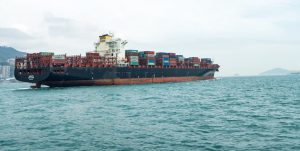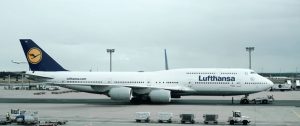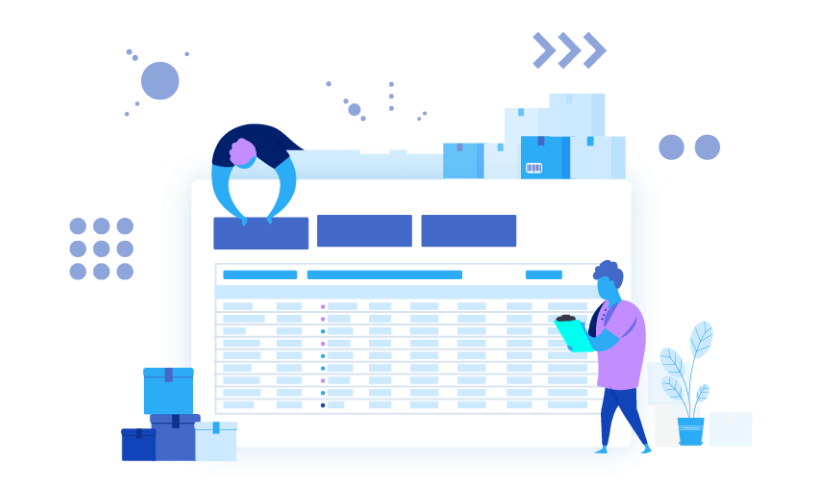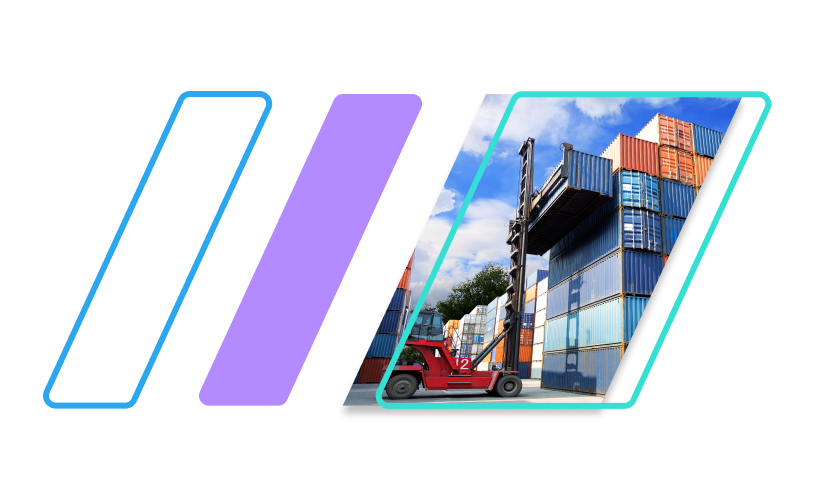Old forecasts are like old news – soon forgotten – and pundits are almost never asked to reconcile what they said with what actually happened.
Superforecasting by Philip Tetlock and Dan Gardner
In 2019, digital freight isn’t a vision; it’s a reality.
There are now literally dozens of platforms, from enterprise forwarders to top five ocean carriers, air freight carriers to online marketplaces, that prove this.
However, life is rarely black and white.
When the Freightos journey started in 2012, the ecosystem was almost nonexistent.
But enough changed by 2015 that we were comfortable classifying 2016 as the digital freight tipping point.
So today, we’re going to dive into the vector that digital freight has followed, charting out the journey so far, highlighting the gaps (which are substantial), and projecting where 2019 will lead us.
What changed? And why?
Q4 2018 LogTech Report
The digital tipping point took some time coming, as the industry gradually came to terms with both technology hurdles and a wide-spread (but not completely ubiquitous) cultural aversion to some aspects of technology.
While global trade climbed, more importers began to import, and supply chains grew increasingly complex; issues were rife.
Eighty three percent of customers lacked shipment visibility and an average spot quote took four days.
Attempts to address this happened. But they were not always successful.
Failures like sub-30% adoption of e-AWB in 2015 (twelve years into the program), a less-than-stellar digitalization effort at DHL or Maersk’s 2009 abandonment of youship.com reinforced the attitude that inertia was the best policy.
New technology and the nascent technology startups were largely viewed with suspicion.
In Freightos’ early days, this was characterized by some doors slamming as soon as prospects heard that Freightos was a tech startup.
But in 2015, a change of attitude, and the sheer momentum for change had become unstoppable.
Ocean carrier overcapacity was generating cripplingly low prices that challenged the viability of their basic business model, global trade was growing, and with it, market competition, and the full scope of Amazon and Alibaba’s approach towards logistics was starting to become apparent.
At large enterprise companies, efforts started (slowly) to provide more internal visibility, triggering a surge in innovation roles at top tier providers.
The tech sector represented another large catalyst.
A marked increase in logistics tech startups (and funding), introduced new tools, more noise, and external innovation that was sufficient to push for a very real change.
Which ushered in a very interesting 2016.
2016: Talking The Talk
It takes a long time to turn a ship around.
In 2015, a handful of pioneering players at the helm started to set sail for new waters.
Delta Cargo rolled out instant online booking and Kuehne + Nagel followed suite with LCL – a true first – with Freightnet.
New entrants were also making their mark.
Three budding digital forwarders completed funding rounds – Flexport, iContainers, and FreightHub.
Also, tech giants Alibaba and Amazon, cruising on early successes on changing fulfillment and warehouse automation, were extending their reach across the supply chain.
Crucially, this led to a much talked about shift on Amazon’s part by enrolling as a freight forwarder, a move accompanied by ongoing expansion of their logistics real-estate (which today, globally, could cover ¼ of Manhattan).
Digitalization also shifted from trade show side-panels to the main stage, with a broader adoption of the need for more comprehensive change.
We consider digitalization not as disruption, but as part of our ongoing business evolution.
Dr. Detlef Trefzger, CEO at Kuehne + Nagel
Many other freight CEOs were echoing the same sentiment, and there were plenty of other signs indicating a change of attitude.
Like, the majority of top forwarders considering freight marketplaces an opportunity, (only 15% perceived them as a threat).
But pilot trials of new technology, small partnerships with tech companies, and funding of a handful of startups is hardly tantamount to an industry revolution.
And then…
2017: Walking The Walk
For the first time, Freightos annual survey of global forwarder online sales saw not just one more top forwarder offering instant LCL booking, but also inclusion of FCL.
By now, there were three top twenty forwarders selling air freight online, and two more set to join them.
However, the pioneers had hardly struck pay dirt. And tellingly, only a small percentage of bookings were taking place online, with most analysts pegging it as under 1%.

According to data collected by data analyst firm SimilarWeb, by mid-2018, not one of the three top freight forwarders’ digital platforms pulled even 5,000 unique US website visitors a month.
The industry’s culture was still not there yet.
More importantly, while the front-end of online freight booking worked, there wasn’t a freight back-end to support it.
Digital forwarders were accused of the same; water-cooler talk was that forwarders had taken VC funding, thrown a pretty user interface on a website, and claimed to automate the full freight ecosystem, despite endemic issues that all carriers and forwarders, digital or not, suffered from.
Back-end automation was a serious issue but some major enterprise providers and startups were definitely making headway into both customer service and visibility.
Carriers were changing significantly too, eager to own direct access to customers.
For instance, air cargo carriers, stuck with siloed systems for booking requests, checking availability, and pricing had long looked enviously across to their well-resourced passenger units at how dynamic pricing was maximizing their passenger business.
Behind the scenes, Air France/KLM were getting ready to bring dynamic pricing to freight.
Their efforts bore fruit in 2018.
All said, in retrospect, 2017 was an incredibly important year.
Regardless of what success stories look like from the outside, growth can be mercurial.
For example, in 1998, Google typically saw just thousands of searches per day; that number has since climbed to 3.5 billion.
It may not have looked like it…but 2017 was when the framework was laid in earnest to scale up in 2018.
2018: Building Connections
There’s still plenty ways in which internal connectivity can be improved, but carriers, not forwarders, led the charge in 2018.
Hapag-Lloyd, closely followed by Maersk, brought together booking, allocation and pricing functions to deliver guaranteed bookings.
At the same time, they also developed better connections to their end-customers too with Maersk emerging as an integrated service provider and Lufthansa developing APIs.
Crucially, the true success in really scaling digital sales came from top tier carriers encouraging customers to use their digital platforms.
For example, Maersk began to levy a fee from customers who didn’t book online.

Automating the full freight process could never happen without actual connectivity all the way through the shipment process, especially at port.
Other players got the hint.
Following the success of several trials in 2017, with the Port of Rotterdam standing out having involvement in both a shipment tracking and a document automation trial, two separate initiatives were launched in 2018.
Maersk/IBM’s TradeLens was soon followed by a consortium including several carriers and terminal operators.
Both plan to solve the hardest part of the puzzle.
2019 and Beyond: Payback Time
These are obviously generalizations, but starting with Delta Cargo and K+N online breakthroughs in 2015, 2016 could be best portrayed as a year of cultural change.
This was followed by several forwarders experimenting with online sales platforms in 2017 but lacking internal connectivity or the external connectivity to truly take the shipment process online.
Together, that meant that the significant efforts had little impact in attracting customers.
Focusing on these issues lead to 2018’s connectivity breakthroughs.
So where will freight be in 2019?
It’s easy to be glass-half-empty.
Siloed technology (and even siloed mindsets) are still the norm.
Piecemeal technological development has slowed down mass adoption with cultural adoption.
But, then again, for a traditional industry, the changes are actually happening really quickly and the industry as a whole deserves credit where due.
The leading companies of tomorrow are intensely focused on digitalization.
Maersk recently trumpeted it in the digital strategy press release:
Everything will be digitised.
Most pioneers are also focused on customer-centricity, like Hapag-Lloyd’s CEO’s said,
Size is not the name of the game anymore, but customer orientation.
As these two quotes illustrate, forwarders may still be leading the charge, but carriers are catching up fast.
But they’re not the only players with skin in the game. For example, DB Schenker’s COO recently described their upcoming “Freight 4.0” release as a digital process from order to invoice.
If successful, it is easy to see this as becoming the biggest breakthrough in 2019.
The big breakthroughs over the past four years have addressed the key blocks – instant online access, internal connectivity, external connectivity.
As the saying goes, it’s not the end, it’s not the beginning of the end, but it may be the end of the beginning.
We enter 2019 with the tipping point well behind us, momentum gathering speed, and a lot to look forward to.



